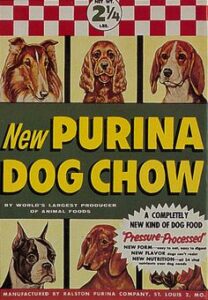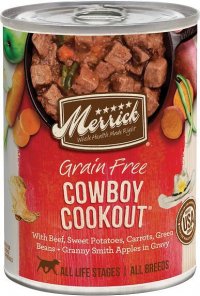The Raw, The Dry, And The Wet
There are different types of raw food models available for dogs; kibble, wet food and BARF (Bones and Raw Food).
The first raw food, prey food has fewer vegetables and fruits compared to other food models. Here are 3 pros and 3 cons to a raw food diet.

- You know exactly what’s in your dog’s food
- Particularly, if you are making it yourself opposed to buying premade frozen meals. This can be particularly useful for dogs that are experiencing allergies
- It’s easy to customize
- Just like humans, dogs have their own individual tastes. By building meals at home or having a large variety of frozen flavors, your dog will never get bored and it can be tailored to their favorite flavors
- There are physical & mental benefits
- It’s hard to ignore the tales of cancer cures, shiny coats, cured aggression, improved eyesight, and shy dogs made confident. If you believe everything you’ve ever read about raw diets, you’d think that feeding your dog raw meat was the canine equivalent of the fountain of youth. Be aware, the science is still new and testing is still being done. Any stories should be taken as just that
- It’s expensive
- Just like buying organic, there is more work and effort involved. It is also harder to store, which adds to the price tag
- It’s easy to end up with a nutritional imbalance
- Without the assistance of a vet or dietitian, it can be very hard to make sure all your dogs’ dietary needs are being met
- You need tons of freezer space
- Whether you are making it yourself or buying the premixes, you will need to keep it frozen so it doesn’t go bad. Unless you want to add a stop at the pet store every week, instead of every three or four, you are going to want to buy in bulk. This could work to your advantage, buying in bulk will often lower your costs
In 1956, the first dry kibble was produced through a process called extrusion. Extrusion is a method used for manufacturing large quantities of shelf-stable foods. Soon after, The Pet Food Institute (a group of pet food industry lobbyists) launched a series of ad campaigns to convince consumers that commercially prepared dog food was the only option to feed. Here are 6 pros and cons to know about dry kibble.

- Convenient, easy to feed & widely available
- Easy to store, travel with or leave with a pet sitter to feed when you’re away
- Not only can you pick it up at the grocery store, but there is a large variety to pick from as well
- Can be used as training bait, easy to carry in a pocket or pouch
- It also helps keep other training treats in high regard
- Cleanliness made simple
- There is little to no clean up
- And definitely no risk of contamination
- Low moisture content
- The cooking process that sanitizes kibble and makes it safe, also leeches kibble of much of its nutrition and moisture for even high quality kibble, leading to the need for supplements and oils
- Highly competitive market
- Not so honest packaging and advertising are often used to lure unsuspecting buyers in. This can also lead to a time consuming decision process; picking the right kibble isn’t easy and there are LOTS to choose from
- Questionable contents
- It is easy to hide, dead or diseased animal parts, and binders, chemicals, preservatives, additives, processing agents, food coloring, and dyes give the product its longevity
Canned pet food became the most popular option on the shelves in 1922 and was made primarily of horse meat (which was carefully marketed as “lean, red meat” and only disclosed in much smaller letters at the bottom of the packaging). Here are 6 pros and cons to know about wet food.

- Tasty!
- Canned food is closer to its natural state and your dog will enjoy it more. It’s like eating that perfect steak off the BBQ vs. a meatloaf that has lots of filler to extend how many people you can serve
- Lower in carbohydrates and higher in protein
- Canned food typically contains more meat than dry foods and less starchy fillers like corn or other flours
- Helps prevent dehydration
- With such a high water content, this feeding option will definitely help keep your dog safe in the hotter months
- Storage
- Cans take up more room and are heavier than dry dog food; once the can is open it must be stored in the fridge
- Price
- As with feeding raw, wet food can add up
- Waste
- Only so many servings can fit into a single can. A single large bag of dry creates far less waste per serving
Long and short of it? There isn’t one. The best way to feed your dog is whatever works best for you. Ask your vet for help if you are feeling overwhelmed, be sure to book an appointment for it. Your dogs nutrition is a complicated subject and should be a stand alone appointment with your vet if you have concerns.
